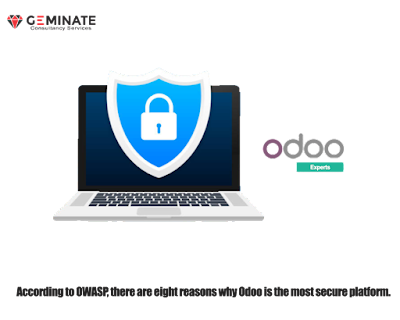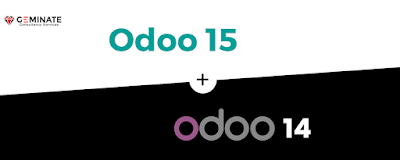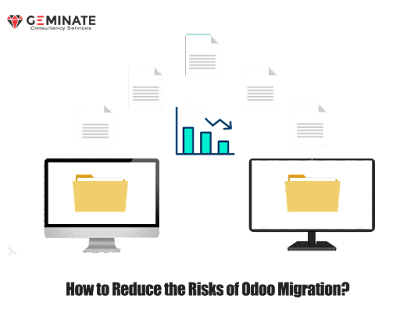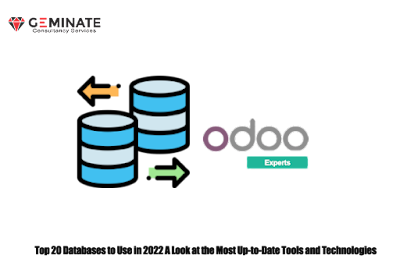The traditional ERP industry has been hesitant to accept public discussions about security, frequently implying that it is a platform issue rather than an application issue. As a result, developing the services that consumers and suppliers' desire appears to be risky and expensive.
Surprisingly, the majority of the best solutions are the most basic and least expensive. There are numerous areas of interest where an acceptable level of security can be obtained, such as networking, applications, education, culture, physical and remote access. Although not everything can be analyses, selecting an application that can pass at least some basic checks may aid in the security of your deployment.
Software Security
Because Odoo is highly customization, Odoo users and developers from all over the world are constantly reviewing the entire code-base. As a result, community bug reports are an important source of security input. As a result, we strongly advise developers to thoroughly test their programs for security flaws.
The Odoo Research and Development process includes a code review step that addresses both new and contributed code security concerns.
Design Security
Independent Security Audit
Odoo is a third-party company that customers and potential clients routinely evaluate for vulnerability scanning and testing. Odoo's security team receives the results and, if necessary, immediately takes action. These results, on the other hand, are kept private, the property of the members, and are not shared. Odoo also has a vibrant community of independent security researchers who constantly monitor the source code and collaborate with us to improve and strengthen Odoo's security. Our privacy policy details on our disclaimer page.
According to Infosec, a security education and research firm, the average cost of a data breach in 2019 was $3.92 million, with a 279-day average duration to detect and control a breach. Don't become the next victim of one of these assaults! Recognize the significance, avoid them, and ensure solid security for your web apps. Simply put, they are critical to the success of your company.
What’s OWASP?
The Open Web Application Security Project (OWASP) is dedicated to improving software security. OWASP is developing an open-source module that allows anyone to take part in projects, web communications, events, and other activities. The central OWASP concept is that all resources and information on the website are free and open to all. As a result, OWASP offers a variety of resources such as tools, videos, forums, initiatives, and conferences. In a nutshell, OWASP is a comprehensive library of online application security information backed up by the vast expertise and knowledge of open community collaborators.
Top OWASP Vulnerabilities and Odoo Solutions
Odoo, according to the Open Online Application Security Project (OWASP), poses a significant security risk for web apps in this area.
Injection flaws: Injection errors, especially SQL injection, are common in web applications. Inserts occur when the interpreter receives user-specified query or command data. The interpreter is influenced by an attacker's hostile data, which causes it to execute unwanted instructions or alter the data.
Odoo's Solution: The ability to include remote files is not exposed by Odoo. Authorized users, on the other hand, can change the functionality by adding custom expressions that the system evaluates. These expressions are always analyzed in a sandbox and straightforward manner, with only authorized functions available.
Cross-Site Scripting (XSS): XSS errors occur when an application retrieves user-supplied data and sends it to a browser without any validation or encryption. An attacker can use XSS to run a script in the victim's browser, hijacking the user's session, blocking the website, and deploying the worm.
The
Odoo Solution:
CSRF protection is built into the Odoo Site Engine. Without this
security token, the HTTP controller is unable to receive POST
requests. This is the recommended method for detecting CSRF. This
security token is only known and exists if the user fills out a form
on the vulnerable website; without it, an attacker cannot impersonate
a request.
Insecure encrypted storage: Encryption is rarely used in web applications to secure data and passwords. Aside from identity theft and credit card fraud, attackers can use unprotected data to commit additional crimes.
Many
applications designed to protect sensitive conversations fail to
encrypt network traffic, resulting in insecure communications.
The Odoo Solution: By default, OdooCloud is HTTP-enabled. Odoo must be run behind a web server that provides encryption and proxies Odoo requests for on-premises deployments. For more secure public deployments, the Odoo Deployment Guide includes a security checklist.
Don't
restrict URL access:
Most apps simply protect critical functionality by ensuring that
references or URLs aren't exposed to unauthorized
access. An attacker could use this flaw to gain direct access to the
URL and perform malicious operations.
Why are security experts concerned about the Open Redirect flaw?
Certain members of the security community consider open redirects to be a security risk. For the most part, it was previously rated at the bottom of the OWASP Top 10. The primary reason for this is that the tooltip displays a familiar site address, and the user may be unaware of the domain name change after browsing, leading them to believe the link. However, as OWASP explains, this is only one method of carrying out this phishing attack. If there is an issue other than a direct failure or damage, an attacker would be unable to attack this.
Why does Odoo consider this a flaw?
Conclusion
Here is evidence that Odoo ERP ranks first in OWASP security and that vulnerabilities are addressed appropriately. A security flaw does not require you to work in a specific industry to be impacted; it affects all businesses. Please contact GeminateCS Odoo experts if your company has a breach and is experiencing a decrease in client satisfaction. They will walk you through the steps. They are Odoo Experts who guarantee the security of data entered into Odoo. Thank you, and have a wonderful reading experience. We look forward to hearing from you.
Via Ref Link : https://www.geminatecs.com/blog/according-to-owasp-there-are-eight-reasons-why-odoo-is-the-most-secure-platform





